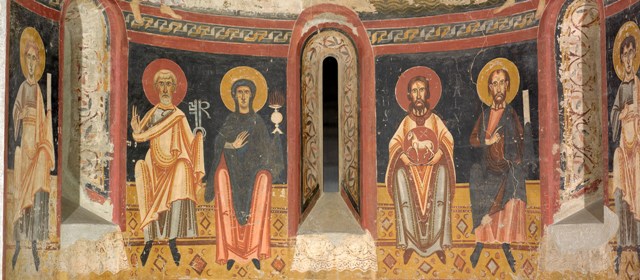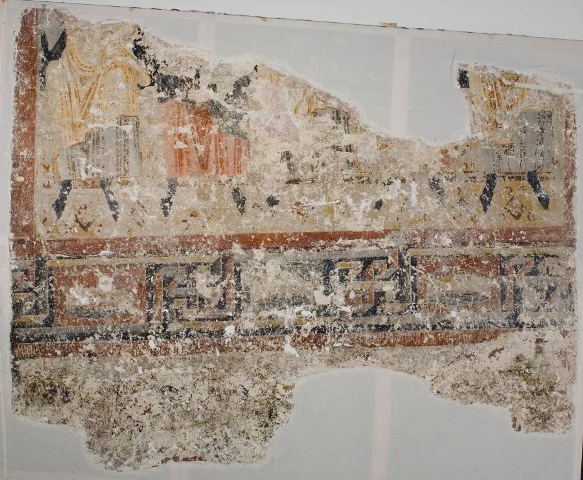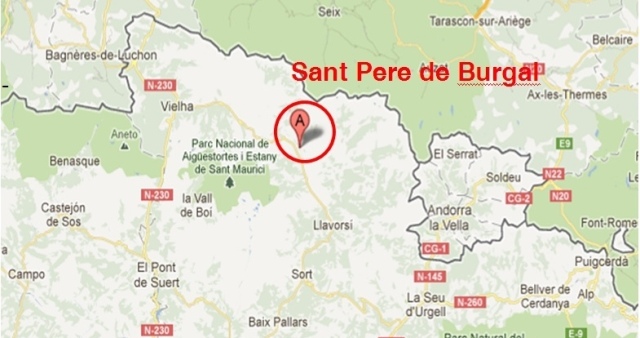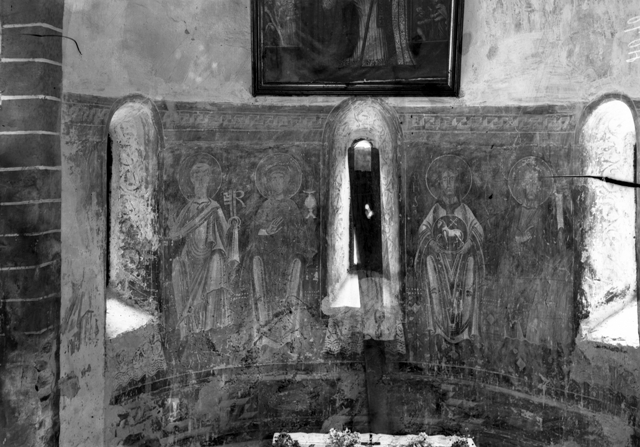Paz Marquès
Here at the Museu Nacional, in the restoration and preventive conservation workshop we have a spectacular, fairly large fragment of mural painting, measuring 2.4 x 3.03 metres, that until a few years ago was in the museum’s reserves.
Place of origin
This fragment, like the paintings that we have exhibited in the museum, comes from the old church of Sant Pere del Burgal (La Guingueta d’Àneu, Pallars Sobirà), which had previously been a Benedictine monastery, and they were done in the 11th century by the Master of Pedret.
While the monastery was constructed before the 9th century, the church was built around the second half of the 11th century. The style falls within the registers of the Pallarès school of Catalan architecture in that period with the Lombard style. This church is unique in the Catalan Romanesque style as it presents a double east end with two apses, on the west and east sides, and this is divided into two storeys. The mural paintings in the Museu Nacional, installed in the Romanesque Art room, are from the central apse on the east side and the large fragment that we are now working on in the workshop has to be placed to the right of the triumphal arch of this same apse.

Floor plan of the Benedictine monastery; in red the apse, in lilac the fragment currently being restored. Plan-graphic: Paz Marquès
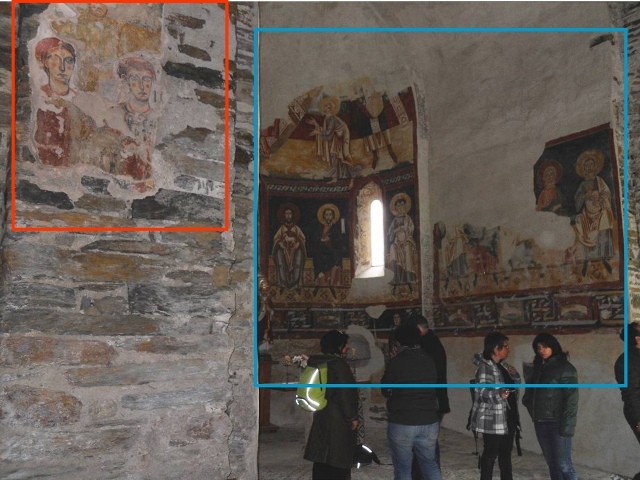
Visit to the church made in April 2012 during Romànic Obert. Photo: Paz Marquès Copy of the paintings done in 1998 (in blue) and discovery of original traces (orange)
Removal and transfer
The paintings in the apse were removed by the Italian restorer Arturo Cividini and the museum acquired them in 1932 with the Plandiura collection. Cividini mounted them on separate flat panels in 1926 and they were exhibited in this flat format from 1934 to 1973, when they were installed in the form of an apse with a grid-format wood and plywood support.
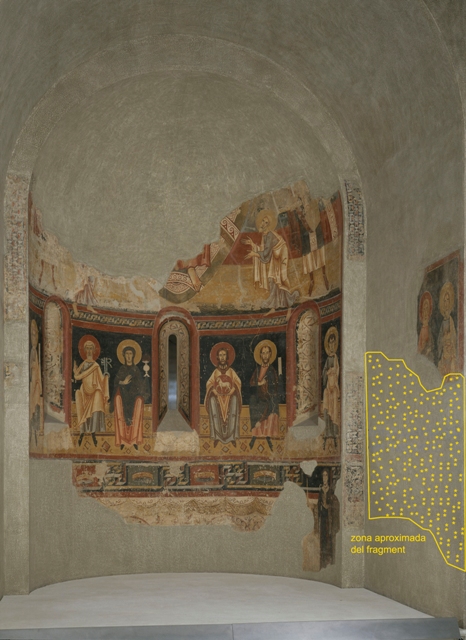
Paintings in the Romanesque Art collection (room 4). Superimposed graphic: Paz Marquès
The fragment we are working on was removed in 1964 by restorer Ramón Gudiol in a new prospection campaign. It is a fragment removed strappo, which was transferred onto two cotton canvases with different weaves with the traditional system, using calcium caseinate as the adhesive.
This fragment, which represents the bottom half of five seated apostles, is part of the right-hand side of the triumphal arch of the apse in the Romanesque room. The fragment shows us the feet and the bottom part of the seated figures and, in the lower register, an important border with geometric motifs and crowns in the centre. In the register below we see traces of largely lost decorative curtains. The two robes of the figures on the right-hand side of the fragment correspond to two heads and bodies that are currently installed in the triumphal arch in the permanent room.
Our great wish is to incorporate the fragment that we are restoring into the triumphal arch of the apse as soon as possible and even to be able to see it in the Romanesque group from Sant Pere del Burgal that can now be seen by visitors to the museum.
It’s going to be a spectacular sight, don’t you think?
Related links
Catalogue
Conservation and Restoration
Restauració pintura mural

